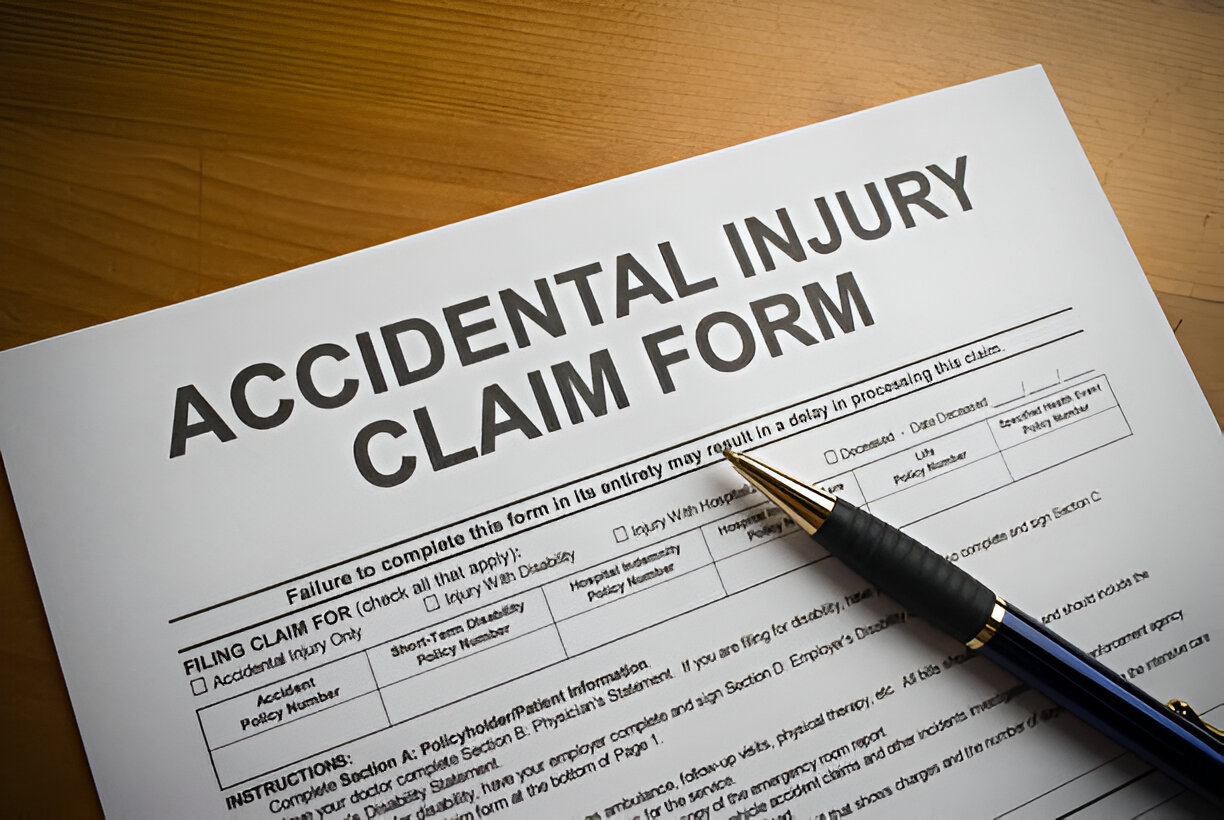Slip and Fall Settlement Calculator
If you’ve been injured in a slip and fall accident, determining your potential compensation is an essential first step. Our Slip and Fall Settlement Calculator provides an estimated value based on key factors specific to your situation. While this tool generates an approximation rather than a guaranteed amount, it offers valuable insight to help evaluate whether legal consultation is warranted.
This calculator analyzes your inputs against data from comparable slip and fall settlements nationwide. Though not a substitute for professional legal assessment, it helps quantify possible compensation for your specific injuries and losses.
Select the type of accident you were involved in:
Fall on commercial property: Select if your fall occurred at a business location such as a store, restaurant, office building, or other private commercial property.
Fall on public property: Select if your fall occurred on government-owned property such as public sidewalks, parks, or government buildings.
Enter the total amount you’ve spent on medical treatment related to your slip and fall injuries. This includes emergency care, diagnostic imaging (X-rays, MRIs), specialist consultations, surgeries, physical therapy, and any other medical costs you’ve already incurred.
Enter wages, salary, commissions, or other income you’ve lost due to your slip and fall injuries. This includes time missed for medical appointments, recovery periods, and any reduction in work capacity during healing.
If your injuries will prevent you from returning to your previous employment or will limit your earning capacity going forward, enter the estimated value of these future losses.
Enter the projected costs of ongoing or future medical treatment related to your slip and fall injuries. This may include additional surgeries, rehabilitation therapy, assistive devices, or long-term care needs.
This factor reflects the severity of non-economic damages like pain and suffering. The multiplier typically ranges from 1.5 (for minor injuries) to 5 or higher (for severe, permanent injuries). The calculator applies this multiplier to your economic damages to estimate non-economic compensation.
This is the sum of your medical expenses, lost earnings, future lost income, and estimated future medical expenses. These are your actual financial losses resulting from the slip and fall accident.
This represents compensation for non-monetary losses such as pain, suffering, emotional distress, loss of enjoyment of life, and inconvenience. The value is calculated by applying the damage multiplier to your economic damages.
$0
The estimated total value of your potential slip and fall settlement, combining both economic and non-economic damages.
Get a free, no-obligation consultation with a slip and fall attorney who can review your case details and help maximize your compensation.
Embed this calculator:
<div id="my-calculator"></div>
<script src="https://injuryclaimcalculator.us/wp-content/plugins/slip-fall-calculator/slip-fall-calculator.php">
</script>
<script>
loadCalculator('my-calculator');
</script>Note that your actual settlement may differ based on jurisdiction, applicable liability laws, available insurance coverage, and other case-specific elements not captured by the calculator.

Who bears responsibility for slip and fall compensation?
Slip and fall liability extends to various parties depending on property control circumstances and accident location. Property owners bear primary responsibility for maintaining safe premises through regular inspection and hazard remediation programs. Commercial landlords typically retain liability for common areas including entryways, hallways, and parking areas regardless of tenant presence.
Business operators assume responsibility for customer safety through appropriate housekeeping practices, spill response protocols, and warning systems for temporary hazards. Property management companies contractually undertake safety oversight responsibilities that may create independent liability separate from ownership interests.
Government entities maintain responsibility for public sidewalks, parks, and municipal buildings subject to special notice requirements and immunity provisions varying by jurisdiction. Residential landlords bear particular responsibility for common area maintenance in multi-unit properties and correction of known hazards in individual units.
Contractors performing work creating temporary hazards incur liability when reasonable precautions including barriers, warnings, or alternative pathways are neglected. Third-party cleaning services may bear responsibility when their activities create unreasonable slip hazards without adequate warning or protection measures.
What statistical patterns emerge in slip and fall incidents?
Slip and fall accidents constitute a significant public health concern with identifiable risk patterns. Approximately one million Americans require emergency department treatment annually for slip and fall injuries, with estimated costs exceeding $50 billion. Falls represent the leading cause of injury-related emergency department visits across all age groups.
Women experience slip and fall incidents approximately 40% more frequently than men across most environmental settings. Age significantly impacts both fall likelihood and injury severity, with adults over 65 experiencing four times the fall rate of younger populations and substantially higher hospitalization rates following falls.
Workplace data indicates slip and fall incidents account for 20% of all occupational injuries and 15% of accidental workplace deaths. Retail environments generate approximately 27% of public slip and fall incidents, with grocery and department stores representing particularly high-risk locations due to frequent floor condition changes.
Weather-related falls spike predictably during winter months in northern states, with 80% of winter slip and fall claims involving inadequate snow or ice removal from walkways. Time patterns show increased fall rates during morning cleaning hours in commercial settings and during seasonal stock rotation periods in retail environments.


State-by-state legal time limits for filing slip and fall claims
Slip and fall claims are subject to strict legal deadlines that vary by property type and ownership. While most states allow 1-3 years to file personal injury lawsuits, claims against government properties often require formal notice within just 60-180 days.
Missing these critical deadlines can permanently bar your right to compensation. For a complete breakdown of filing deadlines in all 50 states, including special requirements for public properties, discovery rule applications for hidden hazards, and statutory exceptions, visit our comprehensive Accident Statute of Limitations guide.
Remember that evidence in slip and fall cases, such as surveillance footage, may be deleted within days if preservation requests aren’t promptly made.
What steps should be taken after experiencing a fall?
After sustaining a slip and fall injury, take specific measures to safeguard both your health and legal interests. Seek medical evaluation promptly regardless of apparent injury severity, as adrenaline may temporarily mask symptoms of serious conditions including concussions or internal injuries. Report the incident to property management before leaving the premises, ensuring formal documentation.
Document the hazardous condition thoroughly through photographs capturing the specific danger, any warning signs or their absence, and surrounding area context. Collect contact information from witnesses who observed either the condition or the fall itself. Preserve injury-related evidence including footwear worn during the incident.
Request copies of any incident reports created by the property owner or manager. Note the names and positions of employees who responded to the incident or acknowledged the condition. Maintain complete records of all medical consultations, retain copies of all healthcare documentation, and adhere strictly to treatment recommendations.
Avoid social media discussion of the incident and decline recorded statements to insurance representatives without legal counsel. Document all financial impacts including medical expenses, lost income verification, and personal property damage occurring during the fall.


When is legal representation advisable for slip and fall claims?
What circumstances indicate the need for attorney consultation in your slip and fall case? Consider securing legal representation when confronting disputed liability situations, significant injuries, or cases involving corporate or government defendants. Attorney involvement becomes particularly crucial with injuries requiring surgical intervention or resulting in permanent impairment.
Slip and fall cases present unique challenges including rapidly changing conditions, surveillance evidence preservation issues, and aggressive comparative fault defenses. Experienced counsel accurately values your claim by calculating complete current and projected financial losses while ensuring appropriate compensation for non-economic damages.
Insurance representatives frequently extend minimal settlement offers to unrepresented claimants, particularly before full injury consequences have manifested. A qualified slip and fall attorney identifies all potentially responsible parties, navigates complex notice requirements, and addresses jurisdiction-specific legal standards affecting recovery.
Most premises liability lawyers provide complimentary case evaluations and operate on contingency fee structures, eliminating upfront costs while aligning attorney compensation with successful outcomes.